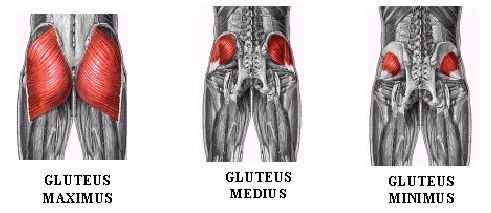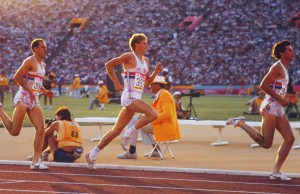08 Apr Q & A with Coach Shem – Bums and cadence
See the rest of this weeks’s newsletter here
1) Any cure for tight glutes?
 Tight glutes (or any other muscle for that matter) can be caused by many reasons and your best bet is to find the causative factor and eliminate or at least manage it as best as you can. Everyone hold stress in different parts of their bodies and being aware that you are susceptible to tightness in certain specific areas is the 1st step to treating it. While there may not be a lasting cure for tight glutes, here are some suggestions that will help you manage the issue.
Tight glutes (or any other muscle for that matter) can be caused by many reasons and your best bet is to find the causative factor and eliminate or at least manage it as best as you can. Everyone hold stress in different parts of their bodies and being aware that you are susceptible to tightness in certain specific areas is the 1st step to treating it. While there may not be a lasting cure for tight glutes, here are some suggestions that will help you manage the issue.
Foam roller – get one and learn how to use it and then use it regularly. Foam Rollers are great tools for self-massage have kept many an injury at bay. Yes it hurts when you get it right, but they do a great job of kneading out the tight knots and realigning our muscles. The trick with the foam roller is to roll slowly and look for the really sore spots. Go too quickly and you might miss the tigger points that lie deeper underneath the superficial muscle layers. You know that you’ve hit jackpot because your face will contort in pain. Take a deep breath and roll back over it again and again, each time spending a little more time over that spot. Move the point of pressure around the trigger point and notice how it really hurts. Unclench your jaw. Now repeat until the soreness subsides. For the glute, the best position is to sit on the roller at an angle and cross one leg over the other. You can check out that position and some others here.
Sports Massage – a tried and trusted sports masseuse is every hard training triathlete’s best friend. This will easily be your most brutal session of the week but the benefits will outweigh the pain. A single session will not solve the issue, you need to build a relationship with your masseuse and see them on a regular basis. Talk to them and tell them your specific issues and they will work with you to keep you supple. It is likely that along the way, they will also uncover other muscular imbalances, tigger points that could be contributing to the existing issue. The way I see it, we spend so much time training, it would be silly not to
- make sure that we stay injury free
- improve our range of motion
- improve the quality of our sessions
- increase our threshold of pain : )
Bike fit – If the tightness persists, have a look at your bike fit (or get help from a professional fitter). Even the smallest changes in bike fit; saddle fore/ aft, saddle height, saddle tilt, saddle to cockpit distance) can make a world of difference to how we sit on the bike and the muscles that we use when pedalling. A good bike fitter will check for leg length discrepancies which may account for chronic gluteal tightness.

2) What is the ideal running cadence and how to reach it? While there is not an ideal running cadence (everyone is built differently and runs differently), I believe that efficient running starts at around 90 strides per minute. There is, of course, an upper limit to stride rate after which you will get faster only by increasing stride length though better ballistic strength – but this is a topic for another day. For now, until you can run with a default stride rate of between 90 – 92 (for taller runners) and 92 – 94 (shorter runners), keep working on it. A high stride rate run is especially useful for triathletes because we are always going to start the run on fatigued legs. We will not have the power of fresh legs to run ‘gazelle-like’ with the long bounding strides of elite runners. Instead, our best run will be from a ‘stride rate driven’ run with shorter more compact strides at a smooth, high frequency. This style of running is much less muscularly demanding. The other advantage of cultivating a HSRR is that, if you are prone to over-striding (when the foot strikes the ground in front of the hips), it cultivates a more compact stride for an ‘under hip’ foot strike which is much more efficient as it reduces the braking and decelerating forces of foot strike. The 1st step is to get our legs use to firing at this rate. I like to use 2 drills called Quick Feet and Fast Strides. Both of these drills will teach your brain to fire neuromuscular impulses at a higher frequency than it has become accustomed to.
- Quick Feet is basically running on the spot with tiny little steps as fast as you can. You can do 4 x 30 sec of Quick Feet as part of your warm up before every run.
- Fast Strides is basically running with as high a stride rate as possible. Do this for short bursts at a time so that you can maintain a high stride rate. The aim of this drill is not to run fast, although you may end up doing so, but more to teach your legs how to coordinate the movement of running at a faster stride rate than they are used to. A trick is to really drive the elbows back and forth quickly in an exaggerated manner as the feet follow the rhythm of the arms. Note that this is a different drill from ‘Stride Outs’ which is kind of the opposite – taking long oversized bounding strides to activate glutes.

You can try doing 15 x 30 sec Fast Strides / 30 sec stationary recovery. Simply find a straight stretch of low traffic road and run up and down along it. The best time to do this little session is after a bike training session because
- you are already warmed up, thus saving time
- you be working on your stride rate
- you will also be teaching your legs how to transition from cycling to running So there you have it folks. Hope you enjoyed a little peak into my head and picked up some ideas to improve your triathlon life. Working on a ‘Bike Cadence’ article for next week – Keep your eyes peeled for that – Game-changer!

